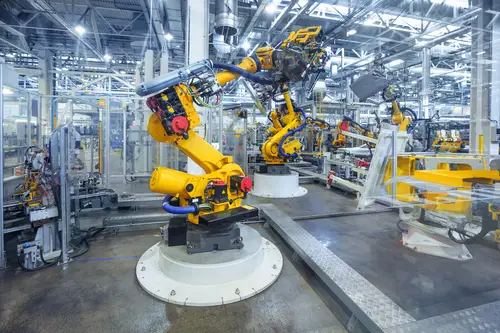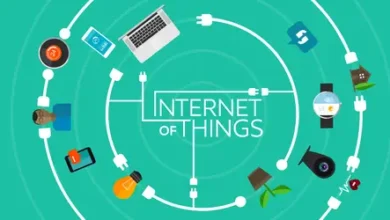The Future Of Work: How Automation is Reshaping Industries

Welcome to the dawn of a new era where technology is no longer just an enhancer, but rather a game-changer. The post you’re about to read, “The Future of Work: How Automation and Robotics are Reshaping Industries”, dives deep into the rapidly evolving world where machines have started occupying significant roles in workspaces across various sectors globally.
We will explore how automation and robotics are not only altering traditional business models but also transforming job profiles, disrupting employment trends and changing economic paradigms. This paradigm shift may seem intimidating at first glance. However, it’s crucial to understand that this evolution brings along countless opportunities for growth and innovation too! So wait and see as we delve into this futuristic journey throwing light on how embracing these technological advancements can potentially move us towards unparallel productivity levels and operational efficiency like never before. To truly thrive in today’s competitive landscape – we must anticipate what lies ahead… Welcome aboard!
“Understanding Automation and Robotics”
As technology continues to advance, the landscape of work is being transformed by automation and robotics. Understanding the effect of these technologies is vital for businesses and workers alike. Automation means the use of technology to execute tasks that had been previously performed by humans. This increases efficiency and accuracy. Robotics takes this concept further by incorporating physical machines that can perform tasks autonomously. While these advancements hold promise for increased productivity and innovation, they also pose challenges such as job displacement and the need for upskilling. The future of work will require a balance between applying automation and robotics to improve efficiency. This also addresses the social and economic implications of these technologies.
“Impacts of Automation and Robotics on Job Markets”
In today’s rapidly evolving job market, the impacts of technology are becoming increasingly significant. Automation and robotics are transforming industries, leading to both opportunities and challenges for workers. Whilst automation can streamline processes, improve efficiency, and cut-down business costs. It also has the potential to displace workers by replacing some manual tasks. As a result, job roles are advancing, requiring workers to adapt to new technologies and skills to remain competitive in the workforce. Ones who can embrace and tackle the power of technology can likely thrive in a changing job market. Whereas others may face displacement and the need to reskill or upskill to stay relevant in an increasingly automated world.
“Industries that can be Affected by Automation”
Automation and robotics are rapidly reshaping various industries, with some sectors more susceptible to these technological advancements than others. One of the industries most likely to be significantly affected by automation is manufacturing. The use of robots in manufacturing processes is becoming increasingly common, leading to improved efficiency, reduced costs, and faster production rates. As automation technologies are advancing, more tasks traditionally performed by humans are being automated. This results in a reduced need for human labor in manufacturing facilities.
Another industry that is highly vulnerable to automation is transportation. The rise of autonomous vehicles and drones has the potential to revolutionize the way goods are transported and delivered. As these technologies become more sophisticated and widespread, there is a looming threat of job displacement for truck drivers, delivery personnel, and other transportation workers. Furthermore, the retail sector is also facing significant disruptions due to automation. The rising popularity of online shopping and the increase of automated checkout systems in brick-and-mortar stores are evolving the landscape of retail operations. As a result, traditional retail jobs like cashiers and sales associates are at risk of being replaced by machines.
In conclusion, while automation and robotics offer numerous benefits such as increased efficiency and productivity, they also pose challenges for industries heavily reliant on human labour. Businesses and policymakers must adapt to these technological changes proactively to mitigate the potential negative impacts on the workforce.
“The Role of Artificial Intelligence in the Workplace”
Artificial intelligence (AI) is playing an increasingly vital role in the modern workplace, revolutionizing how businesses operate and employees work. As robotics and automation continue to reform industries, AI is at the forefront of this transformation.
One key functions of AI in the workplace is its ability to automate tasks that were once performed by humans. This sets free employees to lay stress on more strategic and creative endeavors. This automation not only increases efficiency and productivity but also reduces the margin for error, leading to better outcomes for businesses. Moreover, Artificial Intelligence is improving decision-making processes by analyzing vast amounts of data in real-time to provide actionable insights. By leveraging machine learning algorithms, AI can identify patterns and trends that humans may overlook. This enables companies to make more informed decisions that drive growth and competitiveness.
Additionally, AI-powered chatbots and virtual assistants are enhancing customer service by supplying instant support and customized interactions. This enhances overall customer satisfaction. In terms of workforce management, AI is being helps streamline recruitment processes by analyzing resumes, conducting initial interviews, and even predicting candidate success based on historical data. This not only saves time for hiring managers but also ensures a more objective and efficient recruitment process. Overall, the integration of AI in the workplace is transforming traditional business practices, fostering innovation, and driving sustainable growth in a rapidly changing global economy.
“Preparing for a Robotic Future: Upskilling and Reskilling”
As robotics and automation continue to reform industries, employees must focus on upskilling and reskilling to stay competitive in the job market. With the rise of robotics, many tasks previously performed by humans are being taken over by machines, leading to a shift in the skills required in various industries. Workers need to adapt by acquiring new skills that complement automation, such as programming, data analysis, and problem-solving. Employers can invest in training programs to enable employees
Employers also have a responsibility to invest in training programs to help their employees transform into roles that are less susceptible to automation. By upskilling and reskilling, workers can ensure they remain relevant and valuable in a rapidly evolving job market dominated by robotics.





